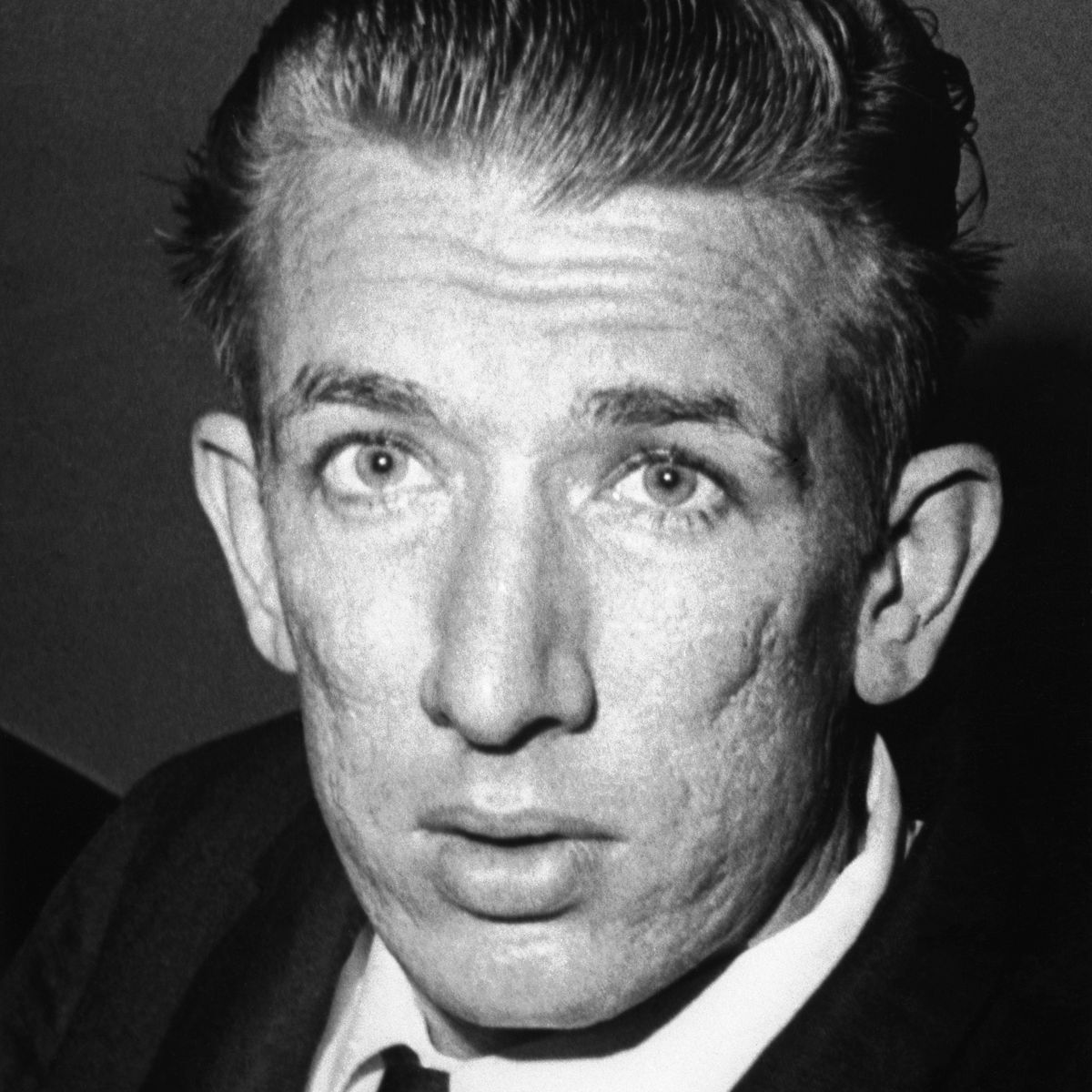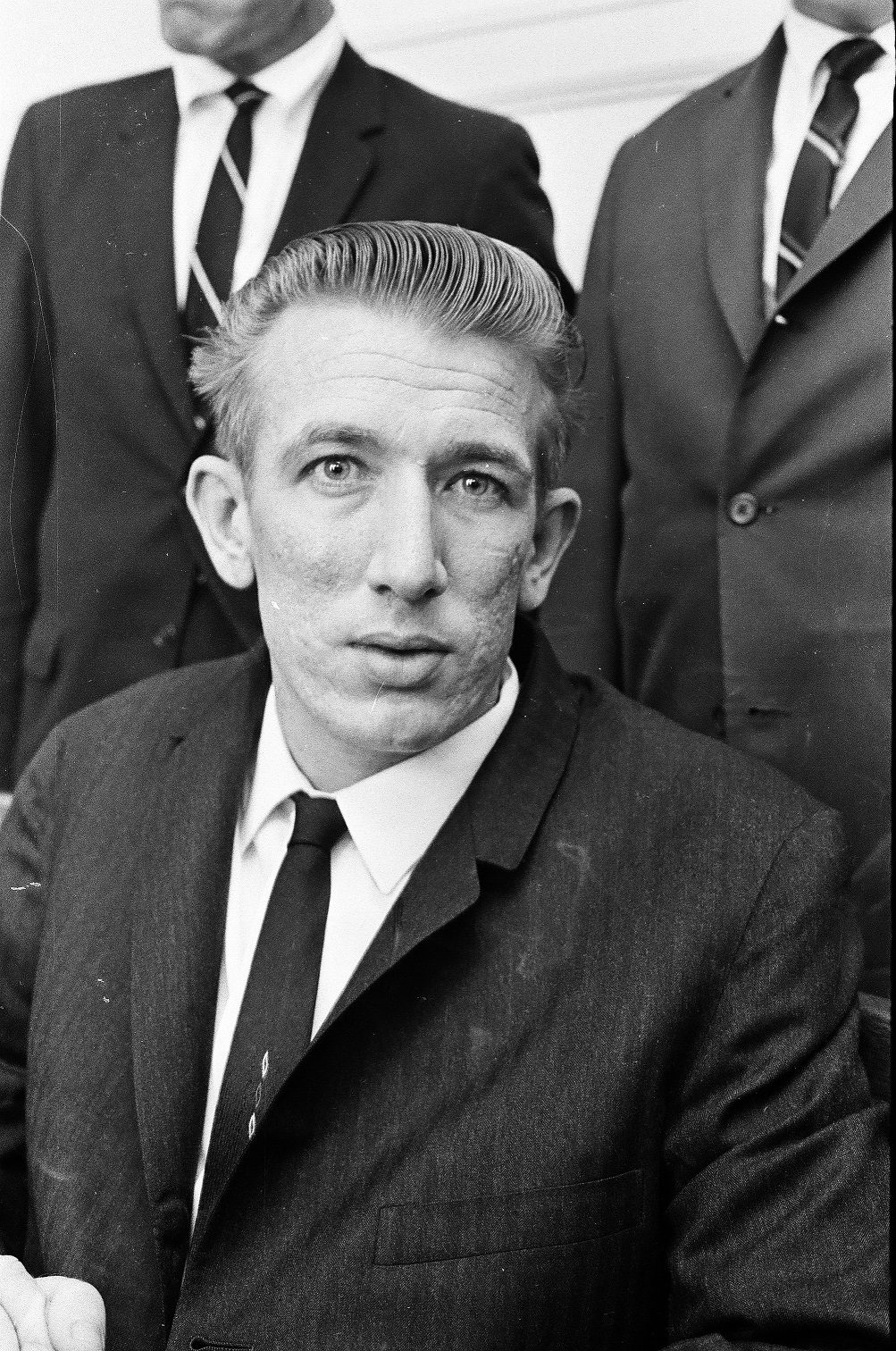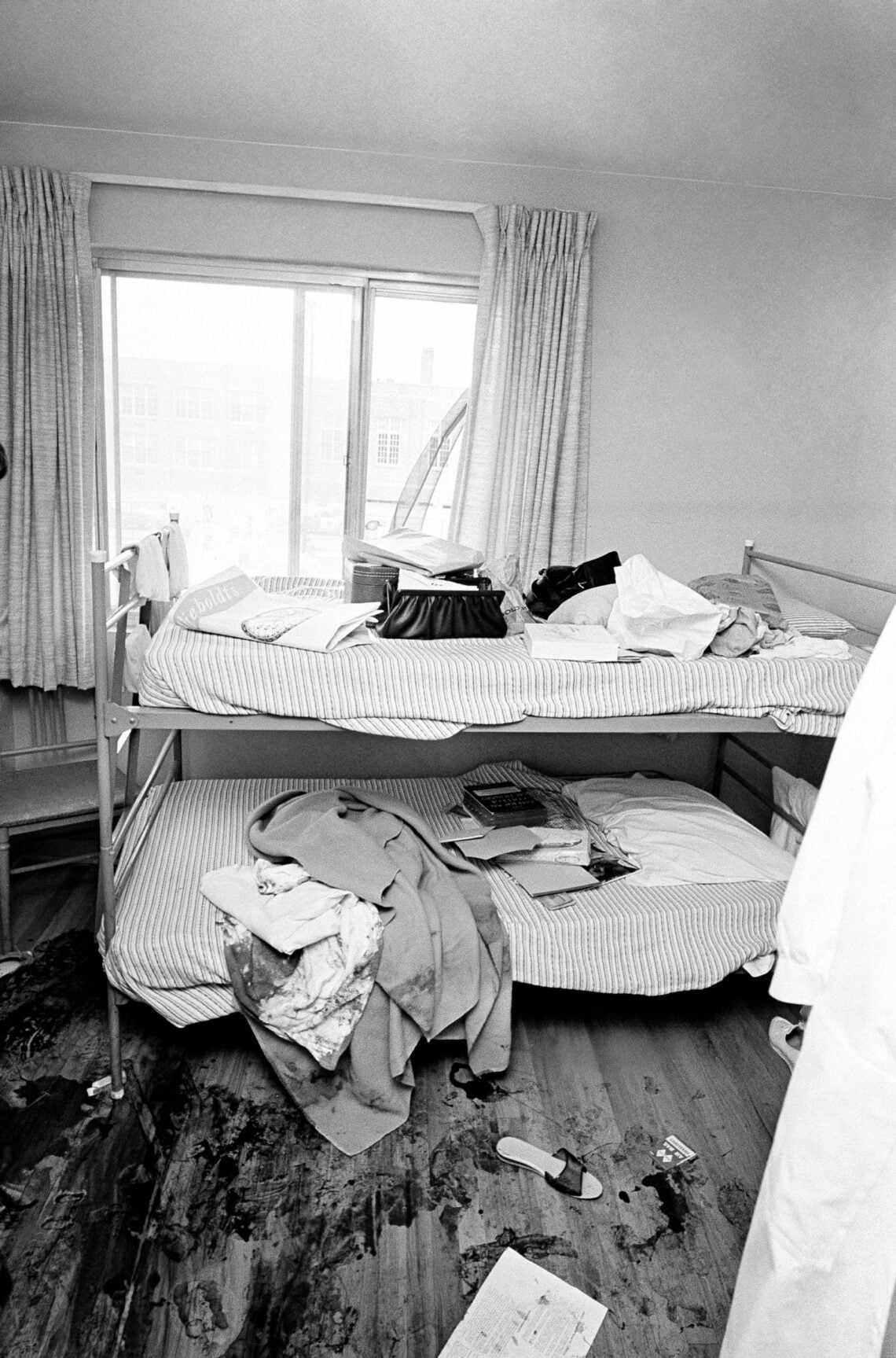Richard Speck: Unraveling The Nightmare Of A Mass Murderer
The name Richard Speck echoes through the annals of American crime, forever associated with one of the most horrifying and brutal mass murders in the nation's history. In the summer of 1966, Chicago was plunged into a nightmare when eight innocent nursing students were senselessly murdered in their South Side townhouse. This article delves into the life, crimes, and lasting legacy of Richard Speck, examining the chilling events that captivated a nation and left an indelible mark on the collective consciousness.
Fifty years ago, the city of Chicago awoke to a reality that would forever change its sense of security. The meticulous and horrifying nature of the crime committed by Richard Speck sent shockwaves far beyond the Windy City, prompting a national conversation about violence, public safety, and the darker aspects of human nature. Understanding the man behind such an unspeakable act requires a closer look at his background, his escalating criminal behavior, and the precise sequence of events that led to that infamous night.
Table of Contents
The Early Life of Richard Speck
Richard Benjamin Speck was born on December 6, 1941, in Kirkwood, Illinois, a small village situated about 200 miles west of Chicago. Interestingly, his birth date was just one day before the infamous attack on Pearl Harbor, a historical footnote that would later be overshadowed by his own horrific notoriety. He was the seventh of eight children born to Benjamin Speck and Mary Carbaugh. His parents were described as religious teetotalers, meaning they completely abstained from alcohol, typically on religious grounds. This upbringing, characterized by strict adherence to temperance, stands in stark contrast to the later life choices and struggles that would define Richard Speck.
Soon after his birth, the Speck family relocated to Monmouth, Illinois, another town in the western part of the state. A significant and profoundly impactful event in Richard Speck's formative years was the death of his father, to whom he had been deeply attached. His father died of a heart attack when Speck was still young, a loss that many speculate contributed to the psychological complexities and instability that would manifest later in his life. While the direct correlation between this early trauma and his later crimes remains a subject of psychological debate, it is often cited as a key turning point in his development. This early loss, combined with a seemingly strict but perhaps emotionally distant home environment, laid a foundation for a troubled adolescence and a life increasingly marked by criminal behavior and a profound lack of empathy.
Personal Data: Richard Benjamin Speck
To provide a clearer overview of the individual at the center of this grim narrative, here is a summary of Richard Speck's key personal data:
| Attribute | Detail |
|---|---|
| Full Name | Richard Benjamin Speck |
| Born | December 6, 1941 |
| Birthplace | Kirkwood, Illinois, U.S. |
| Died | December 5, 1991 |
| Death Place | Joliet, Illinois, U.S. |
| Known For | Mass murder of eight female nursing students in Chicago, 1966 |
| Parents | Benjamin Franklin Speck and Mary Margaret Carbaugh |
| Siblings | Seventh of eight children |
A Descent into Crime and Violence
Long before the horrific events of 1966, Richard Speck had already established a disturbing pattern of behavior characterized by a steady descent into petty crime, alcoholism, and violence. By the age of 25, the year of the Chicago murders, his record was already extensive, painting a picture of an individual increasingly at odds with societal norms and the law. He was an alcoholic, a detail that suggests a significant substance abuse problem fueling his erratic and aggressive tendencies. His criminal record by this time included over 20 arrests, a staggering number that indicated a life lived largely outside the bounds of legality and decency.
The nature of these arrests varied, showcasing a disturbing versatility in his criminal activities. Martin recounts that Speck, then 24, already had 41 counts of arrest, including charges such as drunk driving, trespassing, forgery, violence, rape, and robbery. This extensive rap sheet illustrates a clear progression from minor infractions to more serious and violent offenses, indicating a deeply ingrained criminal mindset and a disregard for the safety and property of others. He was a drifter, periodically working on cargo ships, but never settling into a stable or productive life. His transient lifestyle likely contributed to his detachment and enabled his continued criminal behavior without deep roots or accountability in any single community. Adding to his menacing persona, Richard Speck had a tattoo on his forearm that chillingly read "born to raise hell," a self-proclaimed declaration that would tragically foreshadow the unspeakable acts he was about to commit.
The Chicago Massacre: July 1966
In 1966, Richard Speck committed one of the most horrifying mass murders in American history when he brutalized and killed eight student nurses living on Chicago's South Side. This event would forever cement his name in the dark annals of crime, making him known as one of the most fiendish mass murderers in American history. The sheer audacity and brutality of the crime sent shockwaves across the nation, captivating the public's attention and instilling a profound sense of fear and vulnerability.
The Night of Terror Unfolds
The nightmare unfolded over the course of four hours one night in July 1966. Specifically, according to court documents, Richard Speck broke into a townhome in Chicago, Illinois, on July 13, 1966. This particular townhouse, located on the South Side, was home to a group of young, aspiring female nursing students. There were nine women staying at the townhouse that night, a fact that would become tragically significant.
Speck, described as a pockmarked drifter, was high on heroin at the time of the invasion, a detail that underscores the role of substance abuse in his violent rampage. He was armed with a knife and dressed all in black, a menacing figure emerging from the darkness. Upon gaining entry, he forced the occupants to gather in the living room, effectively taking control of the terrified young women. What followed was an unimaginable ordeal of terror, torture, and methodical murder.
The Victims and the Horror
One by one, Richard Speck tied up and murdered the student nurses. The systematic nature of the killings, carried out over an extended period, added to the horror and brutality of the crime. Each victim faced their own agonizing moments of terror before succumbing to Speck's violence. The fact that he tortured and killed them individually, rather than in a quick, indiscriminate act, speaks to a chilling level of depravity and control. All eight murders were committed by Richard Speck, leaving a scene of unimaginable carnage and grief.
Miraculously, one of the nine women present at the townhouse managed to survive the ordeal. Corazon Amurao, a Filipino nursing student, managed to hide under a bed and remained undiscovered by Speck during his rampage. Her survival was crucial, as she later became the key witness who could identify Richard Speck, providing the testimony that would lead to his conviction. The horror she endured, witnessing the systematic murder of her friends, and her incredible bravery in hiding and later testifying, were central to bringing justice to the victims and their families. The names of the eight victims – Pamela Wilkening, Patricia Matusek, Nina Schmale, Suzanne Farris, Mary Ann Jordan, Merlita Gargullo, Valentina Pasion, and Gloria Davy – became synonymous with the tragic events of that night, their lives brutally cut short by the actions of Richard Speck.
The Nation Captivated and the Manhunt
The discovery of the murdered nurses in their Chicago townhouse sent shockwaves across the United States. The sheer scale of the brutality, the vulnerability of the victims, and the methodical nature of the killings immediately gripped the nation's attention. News of the massacre dominated headlines, creating a pervasive sense of fear and outrage. The public, accustomed to isolated crimes, was horrified by the systematic execution of so many young, innocent lives within a single residence.
The Chicago Police Department launched an intensive manhunt for the perpetrator. The only survivor, Corazon Amurao, provided a crucial description of the killer, enabling law enforcement to create a composite sketch that was widely circulated. The pressure to apprehend the killer was immense, with the entire city and indeed the country, holding its breath. The image of the pockmarked drifter with the "born to raise hell" tattoo became etched in the public consciousness. The investigation quickly narrowed its focus, and within days, Richard Speck was identified as the primary suspect. His capture was swift, occurring just days after the massacre, when he was found attempting to commit suicide. The news of his arrest brought a collective sigh of relief, but the horror of what he had done lingered, profoundly impacting how Americans viewed safety in their homes and communities.
Trial, Conviction, and Appeals
Following his capture, Richard Speck's violent history and subsequent trial captivated the nation. The legal proceedings were closely watched, with the public eager for justice to be served. The evidence against him was overwhelming, largely due to the eyewitness testimony of Corazon Amurao, whose harrowing account of the night's events left an indelible mark on the court and the public. Her ability to identify Speck, despite the terror she endured, was instrumental in securing his conviction. Prosecutors also presented a wealth of forensic evidence, further solidifying the case against him. The trial was a grim recounting of the brutal details, forcing the public to confront the depths of human depravity.
The Death Sentence and Its Reversal
On June 5, 1967, Richard Speck, convicted killer of eight student nurses in Chicago, was surrounded by newsmen as he left the Peoria County Courthouse after receiving a death sentence. The initial verdict was met with a sense of grim satisfaction by a public desperate for retribution. However, the legal journey of Richard Speck was far from over. His death sentence was ultimately reversed by the U.S. Supreme Court in 1972, following the landmark Furman v. Georgia decision, which temporarily halted capital punishment in the United States on the grounds that it was being applied in an arbitrary and capricious manner. This reversal meant that Speck's sentence was commuted to life imprisonment. While many were outraged by this development, it meant that Richard Speck would spend the remainder of his life incarcerated, removed from society and unable to inflict further harm.
Life in Prison and Death
After his death sentence was reversed, Richard Speck spent the rest of his life in prison. Confined within the walls of the Illinois correctional system, he became a symbol of unadulterated evil and the enduring trauma of the 1966 murders. His existence in prison was largely out of the public eye, though occasional reports or revelations would surface, reminding people of his continued incarceration. He was held at various facilities, including Stateville Correctional Center in Joliet, Illinois, where he would eventually die.
Richard Speck died on December 5, 1991, in Joliet, just one day shy of his 50th birthday. His death, from a heart attack, brought a quiet end to a life that had begun with humble origins in Kirkwood, Illinois, and had descended into unimaginable depravity. While his passing closed a chapter on his physical presence, the memory of his heinous crimes and the suffering he inflicted continued to resonate. His death marked the end of his personal story, but it did not erase the profound impact he had on the victims' families, the city of Chicago, and the national discourse on crime and justice. The phrase "heroin, murder, and Richard Speck" often encapsulates the destructive path he walked, culminating in the tragic events that defined his notoriety.
The Legacy of Richard Speck
The name Richard Speck remains synonymous with senseless brutality and one of the most chilling mass murders in American history. His actions in July 1966 not only shattered the lives of eight young women and their families but also profoundly impacted the collective psyche of a nation. The Chicago massacre became a stark reminder of the vulnerability of individuals, even in their own homes, and spurred discussions about security measures, public awareness, and the psychological underpinnings of extreme violence.
The case of Richard Speck continues to be studied by criminologists, psychologists, and true crime enthusiasts, seeking to understand the factors that lead an individual to commit such unspeakable acts. His extensive criminal history, his struggles with alcoholism and drug abuse, and the early loss of his father are often cited as contributing elements, though none can fully explain or excuse the depravity of his crimes. The "born to raise hell" tattoo on his forearm, a chilling personal motto, became an iconic, disturbing symbol of his self-proclaimed identity.
The legacy of Richard Speck is not one of understanding or empathy, but rather a stark cautionary tale. It serves as a permanent scar on the history of Chicago and a grim testament to the darkest corners of human behavior. The memory of the eight nursing students he murdered endures, a testament to their lost potential and the enduring grief of their loved ones. The case reinforced the importance of robust law enforcement, the critical role of eyewitness testimony, and the complex, often frustrating, nature of the justice system as it grapples with such profound evil. Even decades later, the name Richard Speck evokes a visceral reaction, a reminder of a nightmare that once gripped a nation and continues to resonate in the annals of crime.
We hope this in-depth look into the life and crimes of Richard Speck has provided a comprehensive understanding of this notorious figure and the devastating impact of his actions. If you found this article insightful, please consider sharing it with others. We also welcome your thoughts and reflections in the comments section below. For more articles on historical true crime and the justice system, feel free to explore other content on our site.

Richard Speck - Video, Tattoo & Daughter

The First Mass Murderer: Richard Speck in Chicago - Chicago History Museum

A GRAPHIC Look at the Richard Speck Murders